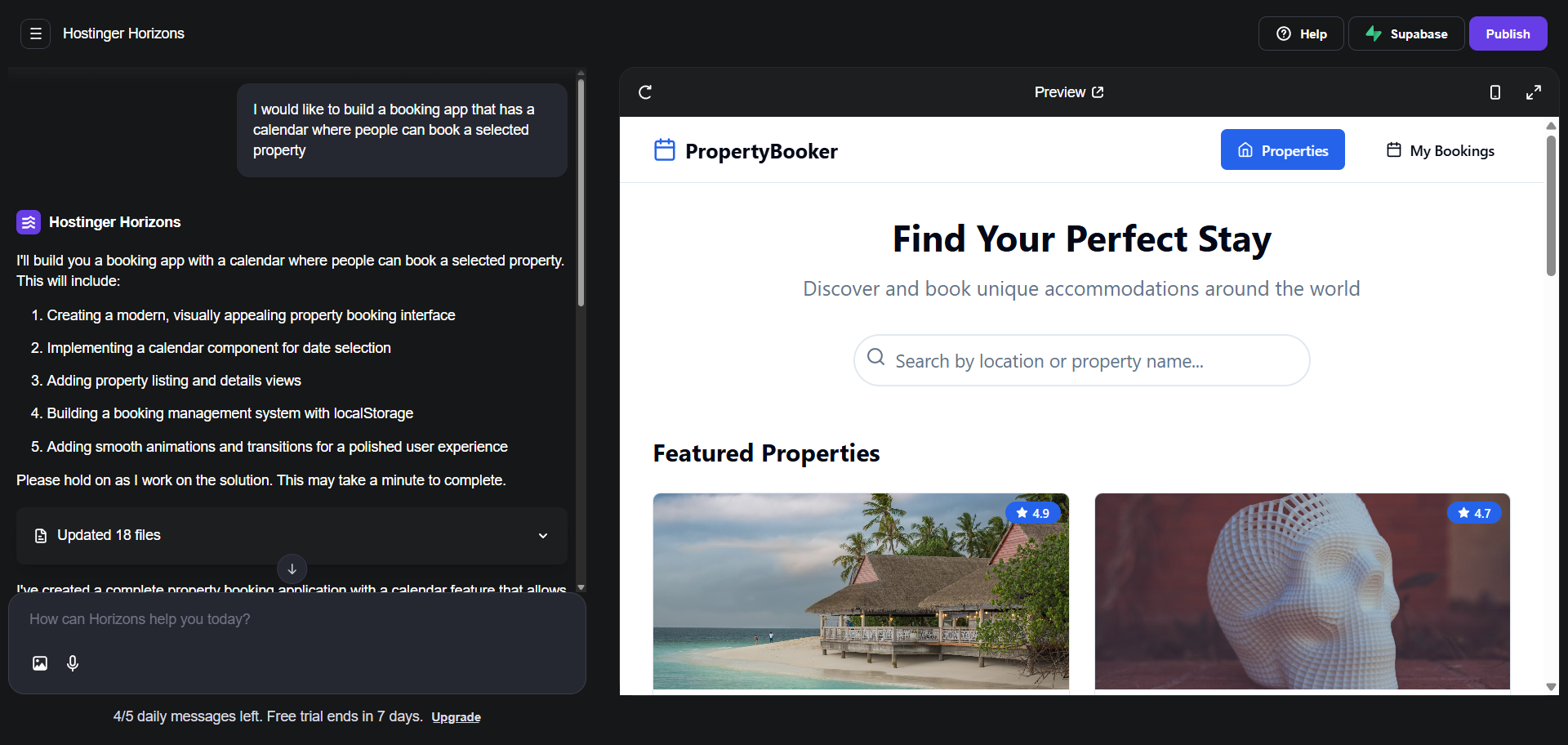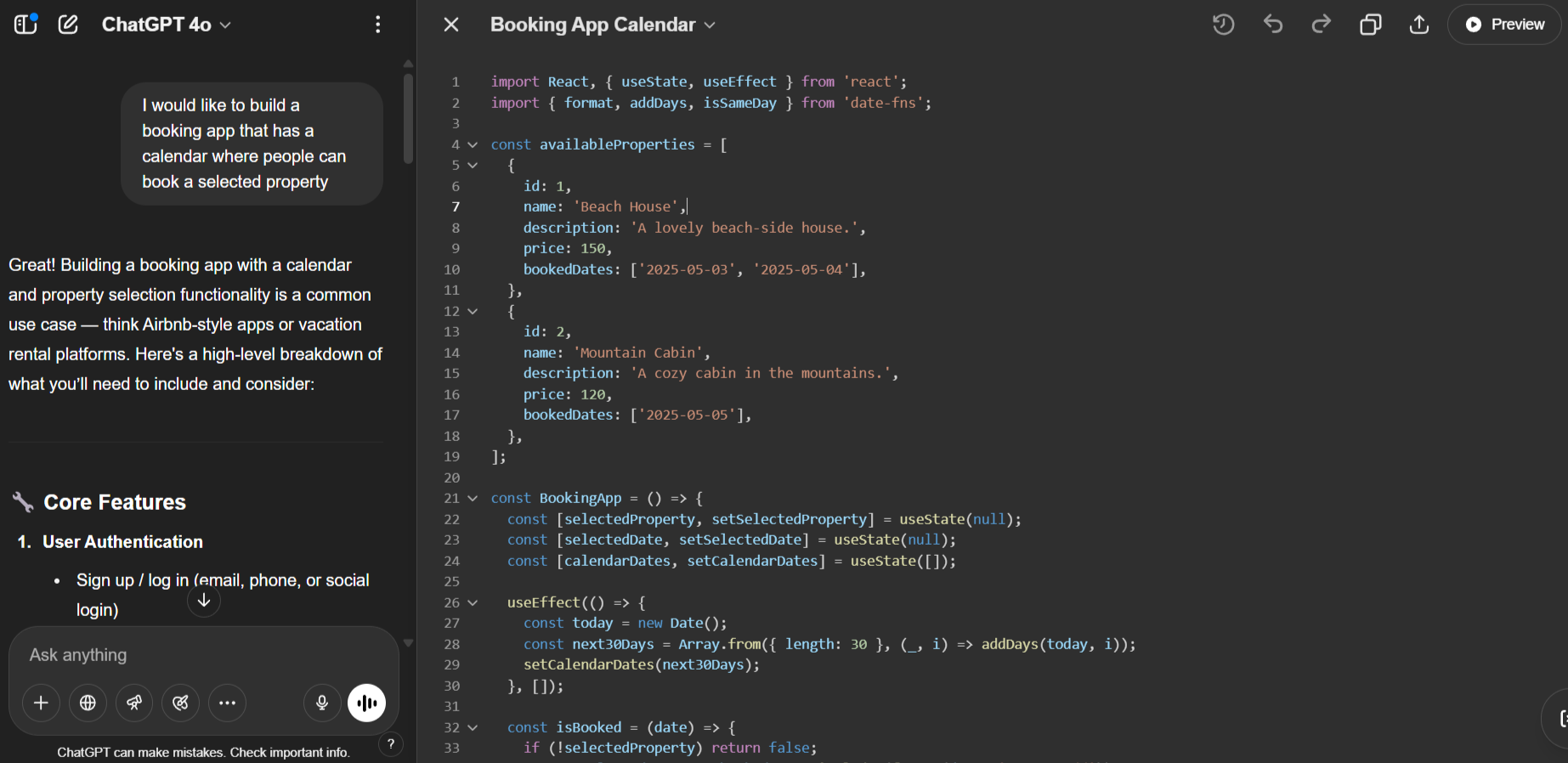Sponsored by Hostinger
What is Vibe Coding?
A collaborative way of coding using AI tools to create code and solutions based on a “vibe”

Vibe coding, another buzzword in the IT space, has gained quite a popularity among developers and IT enthusiasts who are leveraging AI tools to build solutions or write code.
The term received traction after Tesla’s former director of artificial intelligence and Autopilot Vision, Andrej Karpathy, shared his view on X of a new concept of building solutions using AI.
In essence, this new way of building solutions does not rely on tried and tested concepts like roadmaps, PI planning, and numerous meetings where you flesh out ideas, solutions, and potential roadblocks. Instead, you rely on a “vibe” with the roadmap being solely in your own head, and you simply churn out code and ideas for a solution using AI tools.
Try Hostinger Horizons for free
With Hostinger Horizons, all you need is a prompt - no coding or big team required. Instantly get a working version, tweak it through chat, and publish with one click. Everything’s included: hosting, domain management, professional email, and 24/7 live support.
What is the difference between “traditional” and vibe coding?
In basic terms, programming has been done manually, writing code using one of the programming languages, like C++ or Python. This required you to first of all have technical skills that you marry with the knowledge of syntax in the given programming language, and you would often follow a structured approach.
With vibe coding, the code is mostly, if not completely, written by AI, and the only input you provide is the description, using natural language, of what you want the AI to build.
Vibe coding is suited for anyone who is digitally savvy since they can create an app by describing what the end result is they’re looking to create. Since this approach ensures speed, a low barrier to entry, easy iteration, and creativity, it’s clear why it gained so much popularity in such a short time.
Vibe coding seems well-suited for prototyping, but hopefully not for building mission-critical applications in the real world.
Sign up to the TechRadar Pro newsletter to get all the top news, opinion, features and guidance your business needs to succeed!
How to vibe code?
There are two approaches to vibe coding that are often used in the real world. The first one would be to use a platform that helps you build the entire application by simply making prompts to the platform.
Hostinger Horizons comes to mind, where you can describe what you want, and the platform generates both the frontend and backend along with the necessary databases for you. Platforms like this give you the desired result, not the code itself, although you have the ability to open up the generated code and make changes there as well. Such an approach is ideal for beginners or for non-technical people to build their solution.
The second approach is more geared towards those looking to roll up their sleeves and do the work themselves. Tools like ChatGPT, Gemini, Copilot, etc. are prompted to create a piece of a solution or the entire solution, and they present the user with code snippets.
You, as the user, then copy the code and run it, copy over any issues back to the AI, prompting it to fix the code; you repeat this cycle until you have a working solution. Such an approach offers more control, but also requires more knowledge and work.
Our example of vibe coding
We tried out vibe coding using a platform that does the heavy lifting for us, as well as using ChatGPT. We used only a single prompt that stated: “I would like to build a booking app that has a calendar where people can book a selected property.” A platform that is more geared towards beginners offered us a complete solution with a functioning (nice-looking) frontend and a functional backend.

Next, we entered the same prompt in ChatGPT (we had to confirm that we wanted to be presented with the code in a subsequent prompt), and we were given the code for the website solution. A new feature in ChatGPT is the “Preview” button that basically runs the code for you and creates the UI, but it’s far from usable by using a single prompt.

Main concern
While on the surface, vibe coding can seem like a worry-free solution for creating new applications and services, there is one consideration that needs to be made before you start. Namely, security!
A famous example that made rounds on the internet is of an enthusiast creating a payment solution using vibe coding and then being hacked just days later. The memes best sum up the situation.
For people looking to get into vibe coding, this story has a great moral, namely, don’t blindly copy code from AI tools; ensure that it's tested and vetted by cybersecurity experts.
Furthermore, if you plan on using platforms that fully build solutions for you, make sure you’re using the ones that use coding assistants trained with security in mind.
Secure coding practices need to be at the foundations of their design; otherwise, it is best not to use platforms that do not put focus on security.
Moreover, if you prefer to use tools like ChatGPT, you need to work on upskilling and understanding the security aspect of the code and solution you’re looking to build.
There are also real-time monitoring solutions that can be used to check whether AI-generated code has peculiar code patterns that could introduce vulnerabilities.
Closing words
Vibe coding is a great new concept representing everything we expected from the new AI era. It lowers barriers to entry, democratizes code writing for everyone, and increases speed, fun, and creativity for those brave enough to play around with building new tools and solutions.
As with most new things, it is not perfect, and certain aspects need to be considered before diving into the deep end of vibe coding, with security being at the top of the list.
However, if you need a quick prototype, there is no better option than vibe coding. If you’re a tech-savvy person who will employ vibe coding best practices and will work on upskilling on cybersecurity threats, then vibe coding can be a viable solution to creating something new. For everyone else, let’s leave the coding to the professionals and skip looking to replace developers with AI, for now.
Sead is a seasoned freelance journalist based in Sarajevo, Bosnia and Herzegovina. He writes about IT (cloud, IoT, 5G, VPN) and cybersecurity (ransomware, data breaches, laws and regulations). In his career, spanning more than a decade, he’s written for numerous media outlets, including Al Jazeera Balkans. He’s also held several modules on content writing for Represent Communications.
